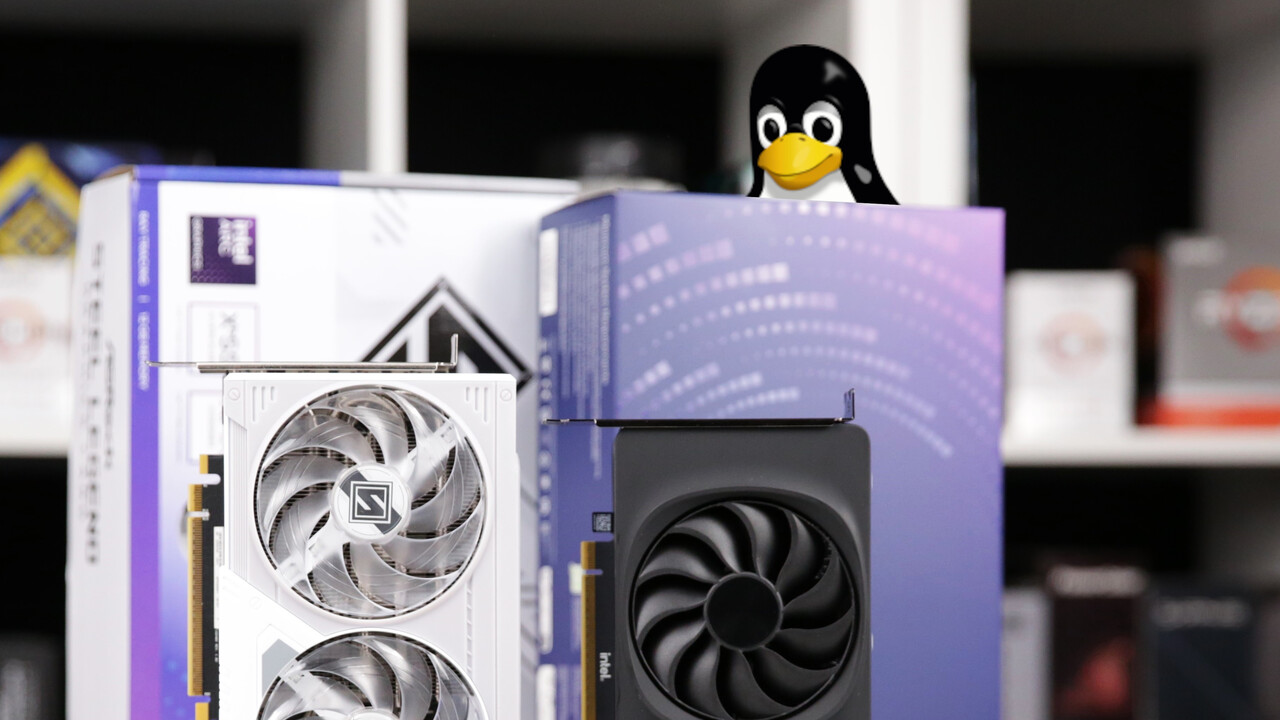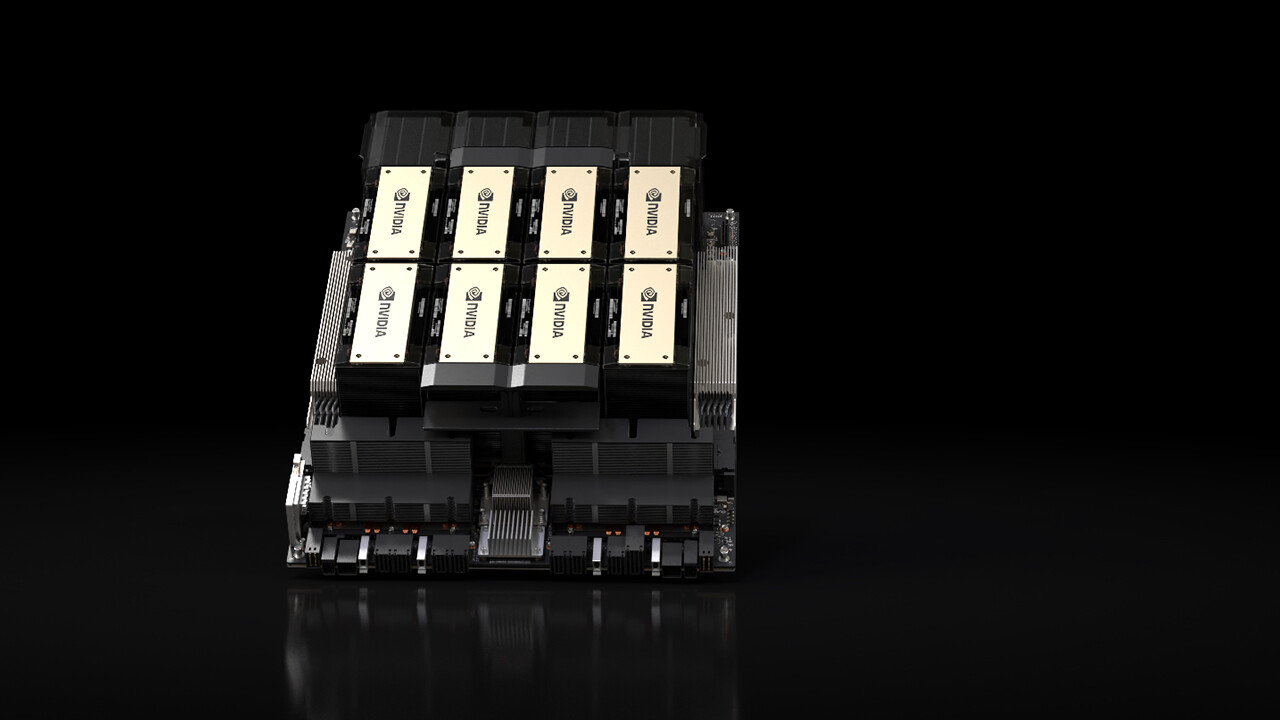RDNA 4 graphics cards: AMD Radeon RX 9070 (XT) and RX 9060 come with FSR 4,654 reviews
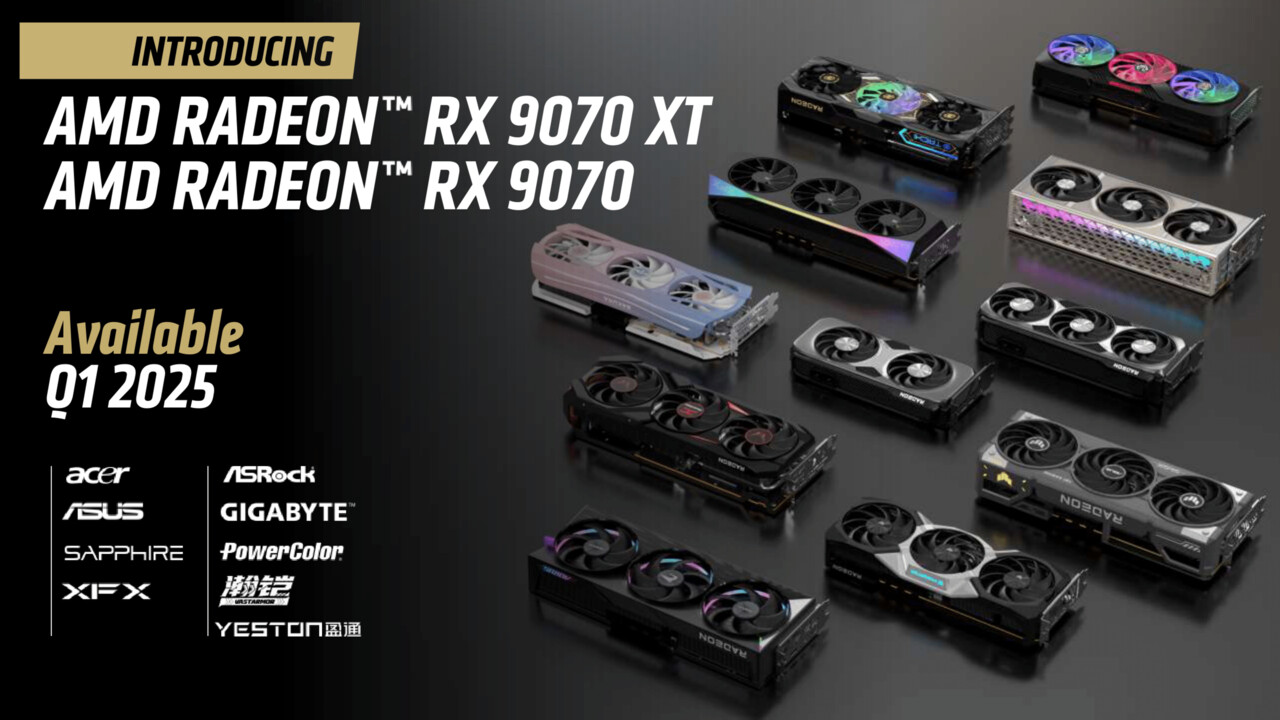
Image: AMD
AMD pulled back the curtain on the RDNA 4-based Radeon RX 9070 a first glimpse of performance. The Radeon RX 9000 exclusively supports FSR 4.
Table of Contents AMD Radeon RX 9070 (XT) and RX 9060 come with FSR 4 RDNA 4: It’s new Architecture adjustments 4nm manufacturing at TSMC RDNA 4 exclusively supports FSR 4 First images of custom designs The new naming scheme A first statement on performance? The Radeon RX 9060 is already showing itself
This is not yet a definitive presentation, as it lacks key technical data, architectural details, pricing and a specific date. The new series was only worth two slides for AMD in the press conference press kit – AMD itself did not mention it at all during the press conference. Only guest speaker Activision mentioned RDNA 4 and FSR 4.
RDNA 4: it’s new
What is now officially confirmed is the new architecture: RDNA 4. It would have been improved in almost every way compared to RDNA 3.
Architectural adjustments
RDNA 4 is said to have “optimized compute units,” “supercharged AI computing,” “CU-enhanced ray tracing,” and “improved media encoding quality.” AMD is talking about the third generation of ray tracing accelerators (after RDNA 2 and RDNA 3), the second generation of AI accelerators (after RDNA 3), and the second generation of the Radiance display engine (after RDNA 3).
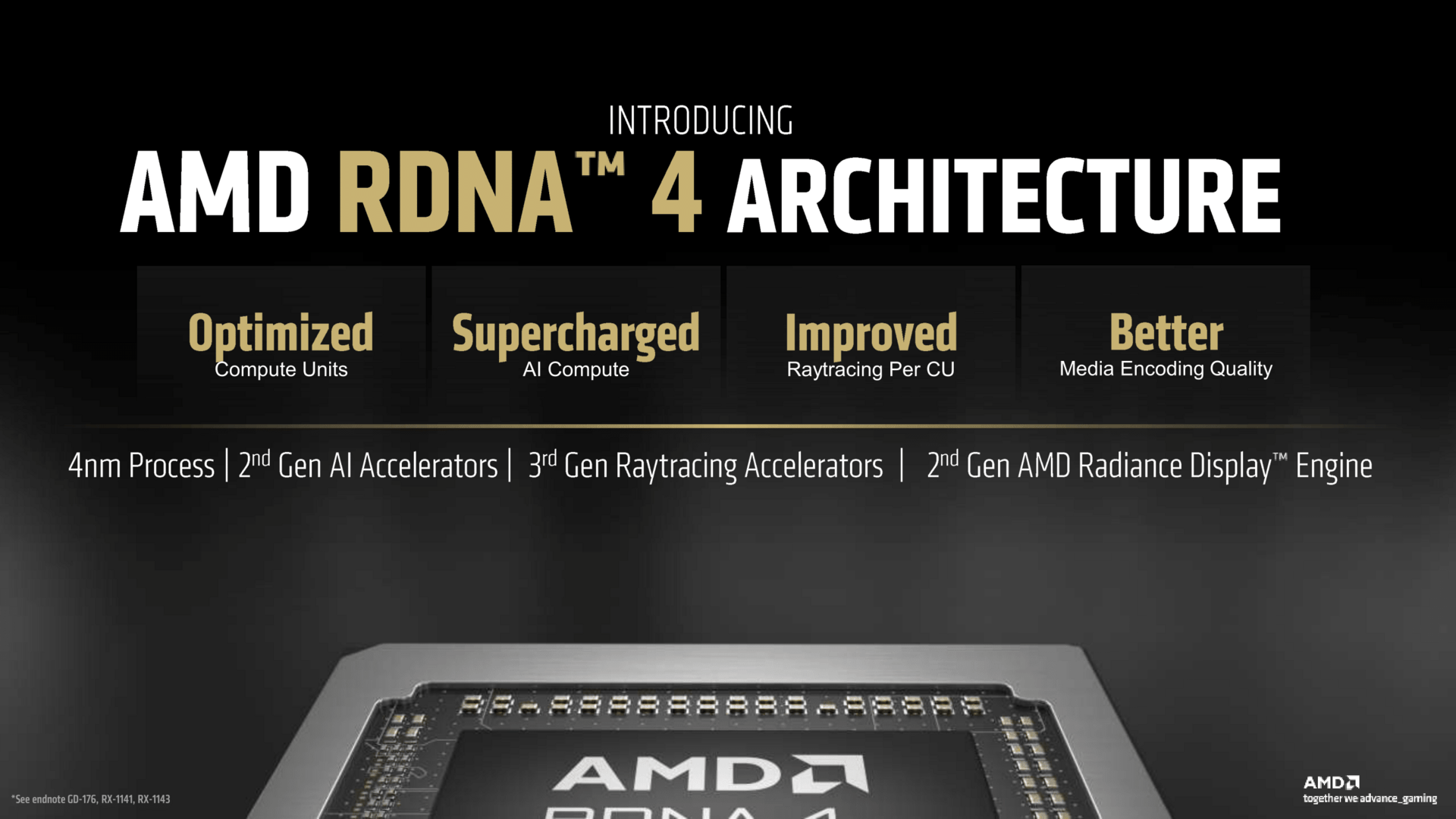 AMD has yet to reveal in detail what has changed from RDNA 3 to RDNA 4 at CES 2025 (Image: AMD)
AMD has yet to reveal in detail what has changed from RDNA 3 to RDNA 4 at CES 2025 (Image: AMD)
AMD also wants to have “significantly” changed the compute units compared to RDNA 3 so it can increase IPC and clock speeds. And AMD is also talking about “massive conversions” when it comes to AI capabilities. However, it seems that this is mainly to support additional data formats and not to install separate matrix units like Nvidia (Tensor) and Intel (XMX).
4nm manufacturing at TSMC
Another detail, although no longer a secret, is the manufacturing process: the chips are manufactured in 4nm. The chips are likely Navi 48 (RX 9070 (XT)) and Navi 44 (RX 9060 (XT)).
AMD did not provide any further information during the press conference, including memory expansion for the first two models. It is possible that the expected attention to the presentation of the GeForce RTX 5000 AMD was too great – then it would be better to do it separately after the show.
RDNA 4 exclusively supports FSR 4
What the company has confirmed is FSR 4 – and that it will be available exclusively on graphics cards with the RDNA 4 architecture. The editorial team has dedicated separate content to AMD FidelityFX Super Resolution 4 (FSR 4 ).
AMD FSR 4: AI scaling is available exclusively for RDNA 4 graphics cards
First photos of personalized designs
The embedded partners who will offer the Radeon RX 9070 XT and Radeon RX 9070 have also been named. Unsurprisingly, these include Acer, Asus, ASRock, Gigabyte, PowerColor as well as Sapphire and XFX. MSI is apparently not returning to AMD with the new generation.
AMD has presented several custom designs for the Radeon RX 9070 XT as well as AMD’s reference design. The Made-by-AMD (MBA) design actually looks similar to what was previously seen on AMD’s advertising banners.
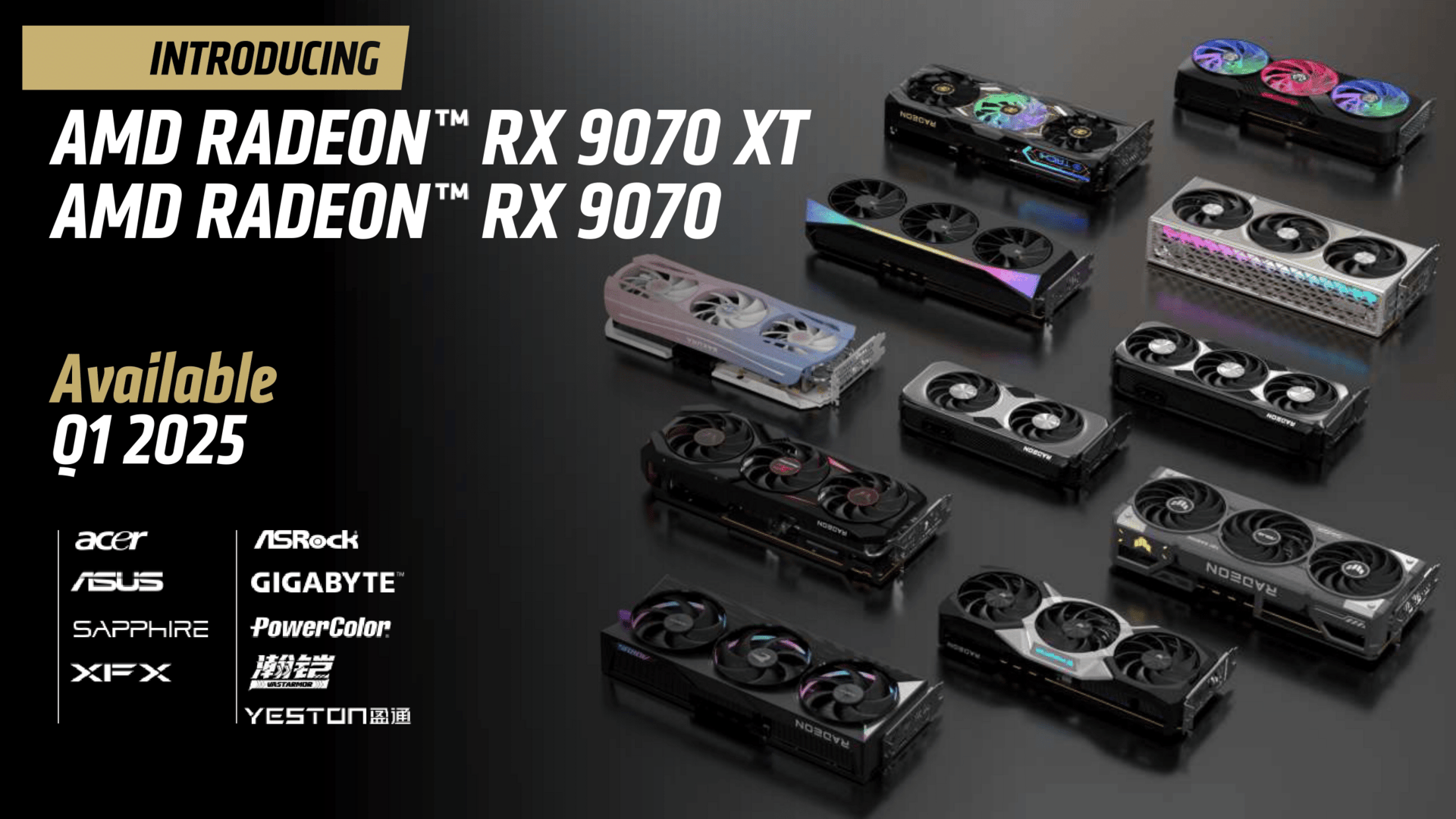 AMD promises first custom designs of the Radeon RX 9070 XT and Radeon RX 9070 (Image: AMD)
AMD promises first custom designs of the Radeon RX 9070 XT and Radeon RX 9070 (Image: AMD)
The new naming scheme
What AMD also discussed was the new name, which is comparable to that of the current Ryzen generation and reminiscent of Nvidia’s scheme – and that’s no coincidence.
AMD actually cites a “synchronization” of the series designation (RX 9000 instead of RX 8000) with the Ryzen 9000 processors as one of the reasons for the change, and the change in the class designation from the second to the third position is intended to make comparisons with Nvidia easier.
In the future, an AMD 70-series will be pitted against an Nvidia 70-series – the only question is which generation. The Radeon 8000, AMD continues, is also free for large RDNA 3.5 mobile GPUs (hello from Strix Halo with the Radeon 8060S, 8050S, and 8040S).
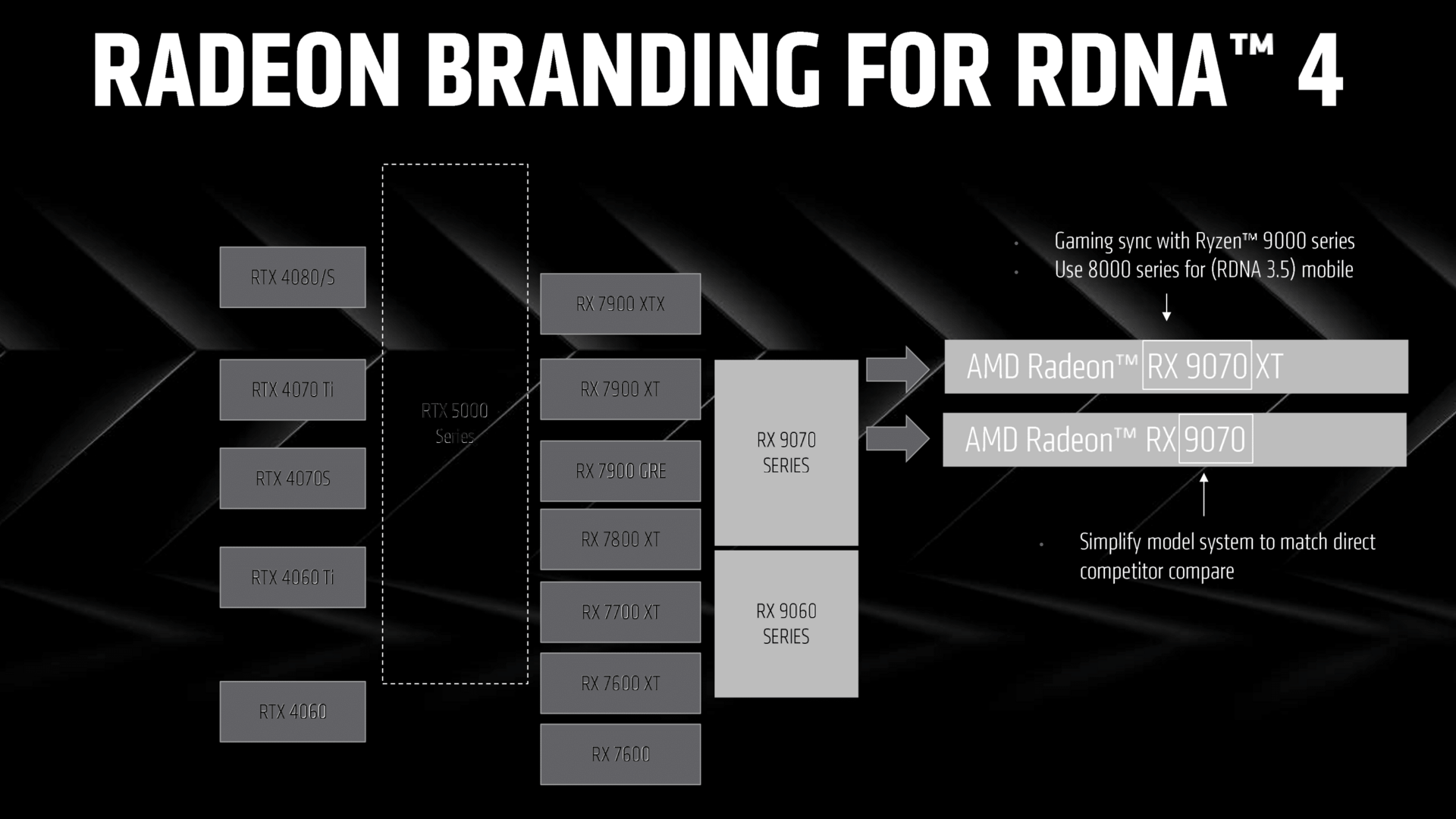 The new Radeon RX naming scheme catches up with the Ryzen 9000 and is a direct reference to its GeForce RTX opponent (Image: AMD)
The new Radeon RX naming scheme catches up with the Ryzen 9000 and is a direct reference to its GeForce RTX opponent (Image: AMD)
A first observation on the performance?
Theoretically, the slide explaining the name also allows a rough classification of the performance, as AMD compares the new series with the well-known RX-7000, GeForce RTX 4000 and even GeForce RTX 5000 models.
As a result, the Radeon RX 9070 XT reaches the performance level of the Radeon RX 7900 XT, the smallest model, at around 7800 XT.
Because the film, for example, classifies a Radeon RX 7700 XT under a GeForce RTX 4060 Ti, which does not correspond to reality, one wonders whether AMD even wanted to hide the performance information here or whether it was mainly about the names.
The Radeon RX 9060 is already showing itself
Last interesting detail on the side: This slide already names and confirms the Radeon RX 9060 series.
Techastuce received information on this element from AMD under NDA. The only requirement was the earliest possible publication date.
Updated January 6, 2025 at 10:28 p.m.
Asus has confirmed what AMD has not yet said or wanted to leave to its partners anyway: The Radeon RX 9070 XT and Radeon RX 9070 both come with 16 GB of graphics memory.
Armed with the latest RDNA 4 architecture and 16GB of VRAM, these graphics cards are ready to deliver premium gaming experiences for years to come.
Asus will offer two different custom designs for both variants: TUF Gaming and Prime. Asus has not yet given specific dates or even pricing.
Topics: AMD Press Conference AMD CES 2025 Graphics Cards CES 2025 Radeon RDNA 4 RX 9070 RX 9070 XT

An engineer by training, Alexandre shares his knowledge on GPU performance for gaming and creation.
